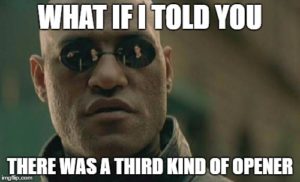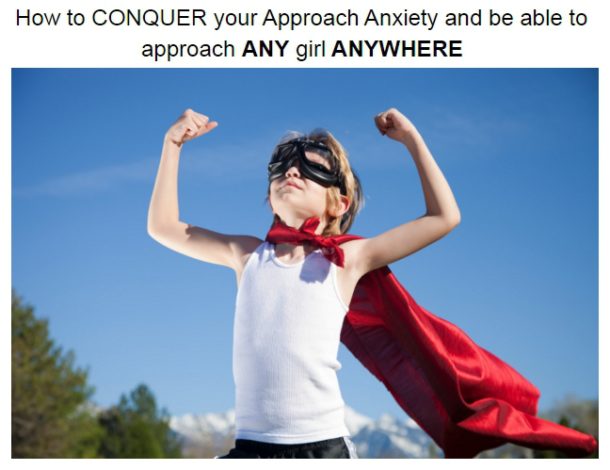Indirect vs. Direct Game in Japan
One of the biggest debates since the inception of the pickup community (at least in the West) has been whether to open direct or indirect. The power games of the Mystery era often settled for traditional pickup lines and indirect openers, such as opinion openers (“Can I get a female opinion on something…”). Roosh V talks about geriatric game for his international style, which essentially is an indirect style of opening based around the “elderly opener” – talk about something mundane, like a smartphone you just bought, a laptop she’s using, or whatever else seems vaguely amicable and unthreatening enough even a social elderly person would open you with. Many gamers in the early stages of the Jlair / Japan pickup scene trumpeted indirect openers like “Can you read this kanji?” or “Where is the starbucks?”
Guys in the other camp are proponents of direct game, such as telling a girl something like “Hey I noticed you from over there and just thought you were so cute so I had to come say hi.” Or “Aren’t you just adorable.” These ballsier openers lay your intentions out on the line for all to see right off the bat, and play to the power of confidence and honesty.
I break it all down in the video below (skip down below the video if you prefer text)
In reality, both of these types of openers have various strengths and weaknesses. Indirect openers are more likely to elicit an initial response, but can leave the girl feel as if you’ve bait-and-switched her unless you make a smooth transition. Also, you’ll have to deal with the fact that you’re hiding your intentions from the beginning and trying to come in under the radar. Long-term, this kind of approach can mentally tax gamers who crave honesty and purity of intention.
Direct openers, on the other hand, require some balls. On the bright side, they communicate all your intentions right off the bat. On the downside, they can be a bit overpowering, like using a bulldozer to bust down a door which you simply could have pushed open. Additionally, giving away compliments right off the bat gives the girl a bunch of validation she didn’t ask for and has probably heard many times, undermining the power of your brazen approach. The effect can be like ramming cookies down a kid’s throat before dinner – their appetite is spoiled before the main course arrives.
Ultimately, direct and indirect openers share something in common: the desire to explain the context of the interaction. In other words, indirect openers communicate “This isn’t a romantic approach (it’s something else)” and direct openers communicate “This is a romantic approach, and I like you.” However, this very need to explain yourself is the root of a subtle problem in the entire framing of the interaction.
Why do you even feel the need to explain yourself at all when opening a girl? If you were the king of a country, the boss of a company, the lord of a district, would you ever feel the need to explain why you talk to someone or ask a question? If she was your girlfriend, would you explain why you’re talking to her?
What if I told you there was a third, better way of approaching?
The Assumed Opener
I present to you the assumed opener. The assumed opener is how I open about 90% of my approaches, and how I recommend guys do pickup in Japan, especially on the street. The assumed open means you do not explain the context of why you are talking to her unless she brings it up. Instead, you assume your right to communicate with the girl (without explanation), and assume she will respond. After all, opening women on the street (or anyone or anything that piques your interest) is entirely natural, and shouldn’t be considered some otherworldly or momentous occasion which demands explanation. If she feels confused or is a bit dense as to the reason (most won’t be), she can ask you why you’re talking to her, at which point you can enlighten her.
Many guys are familiar with this strategy of vagueness in other areas, such as keeping the relationship status vague until confronted by the dreaded “So what are we?” questions, or pulling girls home with an ambiguous “We’re going to an afterparty” or “Let’s have a drink just up this way. 5 minutes this way.” Yes, we can call this tactic male omission: purposefully leaving out a piece of information until confronted with a direct question about it. And perhaps even then kicking the can further down the road.
What advantages does the assumed open carry over both direct and indirect openers? Let’s break them down.
-The assumed open assumes rapport with the girl rather than asking for it
-The assumed open conveys that talking to a stranger in the street is not a big deal. So much so that it needs no explanation, pretense, or context.
-The assumed open doesn’t give away too much validation or unearned, shallow compliments based on physical appearance (as the direct opener often does)
-The assumed open doesn’t mask your intentions behind a false premise (as the indirect opener does)
-The assumed open assumes the girl will open, creating a self-fulfilling prophecy
-The assumed open casually initiates the interaction and sets the vibe of “us talking together” rather than “me vs. you” or “me picking you up”
– in other words, it is communion, not antagonism
-The assumed open leverages the power of ambiguity and leaves her wondering what you actually want, which builds sexual tension
Yes, much like Schroedinger’s cat, once something is known, it loses some magic. The dance of seduction is at its most powerful when the woman suspects but does not know for sure if you like her. The assumed opener preserves this magic and leverages it for maximal effect off the open.
So what does the assumed opener practically look like? Here are a few simple examples.
-”You’ve got some curious blue shoes there”
-”You seem to be human.”
-”Just finished demolishing a hamburger over in Daikanyama. What are you up to?”
Yes, these fall somewhere between a direct compliment or explanation and indirect beating around the bush. You simply just begin talking to the girl. It’s important to note as well that pretty much anything can work – the content doesn’t have to be incredible. In fact, since the language barrier can often be an issue, it helps if the content is rather simple and easy to understand.
The final 10%
So I mentioned that the assumed opener accounts for about 90% of my opens. What about the last 10%? In what cases are indirect or direct openers (as opposed to assumed openers) most effective? If you are spotlighted, blatantly seen, or “clocked” on the approach in no uncertain terms (ie – she is looking directly at you and clearly notices you approaching), you can (but don’t need to) go direct. If you are in a rush on your way somewhere and have a very short time to make a good impression, you can (but don’t need to) go direct (“Hey I just saw you and think you look cute, but I’m in a huge rush right now. Let’s talk next time. What’s your LINE”) and this often works best (especially when your rush is legitimate). On the other hand, indirect can work if something conveniently incidental does pop up and strike you or if you do legitimately need directions somewhere or some sort of assistance. Otherwise, indirect rarely is the best choice. Finally, if you simply cannot fathom approaching at all, forget about this entire discussion and use whatever method gets you talking to girls. Ultimately, techniques and specifics come secondary to concrete action. As always, do whatever leads you to talk to more girls who inspire you.


